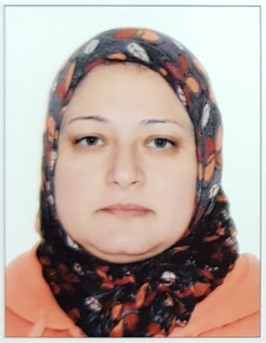Day 1 :

Biography:
Prof. Ilham Youssry, MD professor of Pediatrics, Cairo University and Head of the Pediatric Hematology and Bone Marrow Transplantation (BMT) Unit, Cairo University. Dr. Ilham received training in Pediatrics and Pediatric Hematology in New Children Hospital, Cairo University &Tokyo National Cancer Centre (NCC), Japan & Southern Illinois University, USA & The Royal London Hospital and in the BMT unit at St Mary’s Hospital Paddington, UK. Professor. Ilham is an international Certified Trainer from the International Board of Certified Trainers (IBCT), Netherland. Professor Ilham received a master’s degree in Health Profession Education from Maastricht University and Suez Canal University. In 2012 she completed training in a 2-year program in Foundation of Advanced International Medical Education and Research (FAIMER), Philadelphia, USA. Professor Ilham was the director of the Pediatric Hematology and Bone Marrow Transplantation
Abstract:
Keynote Forum
Victor Lage de Araujo
CAP Evidence-Based Healthcare, UK
Keynote: Doctor
Time : 10:45-11:20

Biography:
Abstract:
Keynote Forum
Thomas Moehler
Global Head of Medical and Scientific services Hematology/Oncology, IQVIA, Germany
Keynote: Dr.

Biography:
Abstract:
Keynote Forum
Shivanthi Samarasinghe
De Montfort University, UK
Keynote: Professor
Time : 11:20-11:55

Biography:
Dr S. Samarasinghe’s research career commenced with securing a highly internationally competitive Darwin Trust of Edinburgh doctoral scholarship to work under a world-leading Molecular Microbiologist, Professor Steve Busby, FRS (University of Birmingham) to study the molecular mechanisms that control the gene expression in Escherichia coli. After completing her doctoral studies, she complted a Post-doctoral Research position (2008-2011) at the University of Leicester to understand the molecular mechanisms that control the cell division of higher Eukaryotic Microbes. During that time she was selected as a Visiting Research Fellow at a most prestigious Molecular biology research Lab, European Molecular Biology Laboratory, (EMBL), Germany. Presently, the focus of her scientific research is to understand the underlying genetic characteristics of antibiotic-resistant bacteria associated with Urinary Tract Infections (UTIs), and how these characteristics can be manipulated to combat resistance via developing novel anti-microbial therapies.
Abstract:

Biography:
Dr Maha El Taweel has completed her MD PhD from National Cancer Institute, Cairo University, Egypt, 2002. She finished her diploma from France in Cytogenetics (DIU), 2008 and research studies (CRA) in Mcmaster University, Canada, 2017. She has published many papers in different international journals in the field of Hematological malignancies.
Abstract:

Biography:
Oscar Marin has completed his medical degree at the age of 26 years from La Plata-University, Argentina University, Medical Doctor from BuenoAires University-Argentina and postdoctoral studies from Medical Academy of Medicina, Buenos Aires, Argentine, Tokyo Medical and Dental University, and the Cancer Institute, Tokyo by JICA (Japan International Cooperative Agency) and He is the head of Pathology Service in Pablo Soria Hospital, Jujuy-Argentina. He has published papers in reputed international and argentinean journals, and has been serving as an editorial board in the Electronic Journal of Biomedicine, also was speaker in several medical meetings in Argentina, Brasil, Japan and Kiev-Ukraine and presente many works in argentinean and international pathology congresses including the USCAP (United State and Canadian Academy of Pathology.
Abstract:
Jujuy-NW-Argentina, a state near the Andes Mountains presents a high incidence of hematolymphoid malignancies. According to RITA -acronym for Institutional Hospital registry of Tumors of Argentinabelonging to the National Cancer Institute, considering by organ and systems, Hematolymphoid malignancies are overcome only by female genital system tumors, showing a high number of cervix uterine cancer. Non- Hodgkin lymphoma shows the higher incidence, and high grade B-cells lymphomas show relationship with viral agents as Human Immunodeficiency Virus (HIV), Epstein-Barr Virus (EBV), Human Herpes Virus Type-8 (HHV-8) especially in a number of Diffuse Large B-cell Lymphomas (DLBCL) and clinicopathological variants. In low grade lymphomas bacterial association is found, in gastric MALT-Lymphoma wit Helicobacter pylori and in the Immunoproliferative Small Intestine Disease (IPSID) lymphoma with Campylobacter jejuni. Also a case of Marginal zone lymphoma of the MALT-type occurring in the setting of Post-Transplant organ recipient shows signal for EBV, by LMP-1 (Latent Membrane Protein) and EBER-1. Among T-cell lineage lymphomas a relationship with Human T-cell Lymphotropic Virus type 1 (HTLV-1) is found by using serologic test for HTLV-1 in native aboriginal people. In the third lymphoid lineage, the NK/T-cell lymphomas show a strong relationship with EBV established by EBER-1 -the Epstein–Barr virus-encoded small RNAs (EBERs)-. Also Hodgkin lymphomas show a relationship with EBV. Among our cases of T-cell lymphomas the relationship with HTLV-1 is found by using serologic tests for antibodies to HTLV-1 by means ELISA (Enzyme-Linked ImmunoSorbent Assay) Southern Blot and CMIA (quimioluminiscency). EBV was testes by using EBER-1 and LMP-1.Macromolecular immunoactive polysaccharides, glucans, are now available for the prophylaxis of viral, bacterial or fungal infection. They can gently induct or modify of immunity without hyperstimulation. A successful example of using glucans for anti-viral treatment is the pharmaceutical called Kagocel. It is based on highly standardized chemically modified both natural polyphenol and immunoactive cellulose betaglucan. The commercial success of this drug in the Russian pharmaceutical market is due to its excellent safety and efficacy record over fifteen years. The antiviral efficacy of Kagocel against influenza infection has been confirmed in vitro and in vivo in relation of different strains H3N2 and H1N1 influenza viruses, including H1N1pdm09
